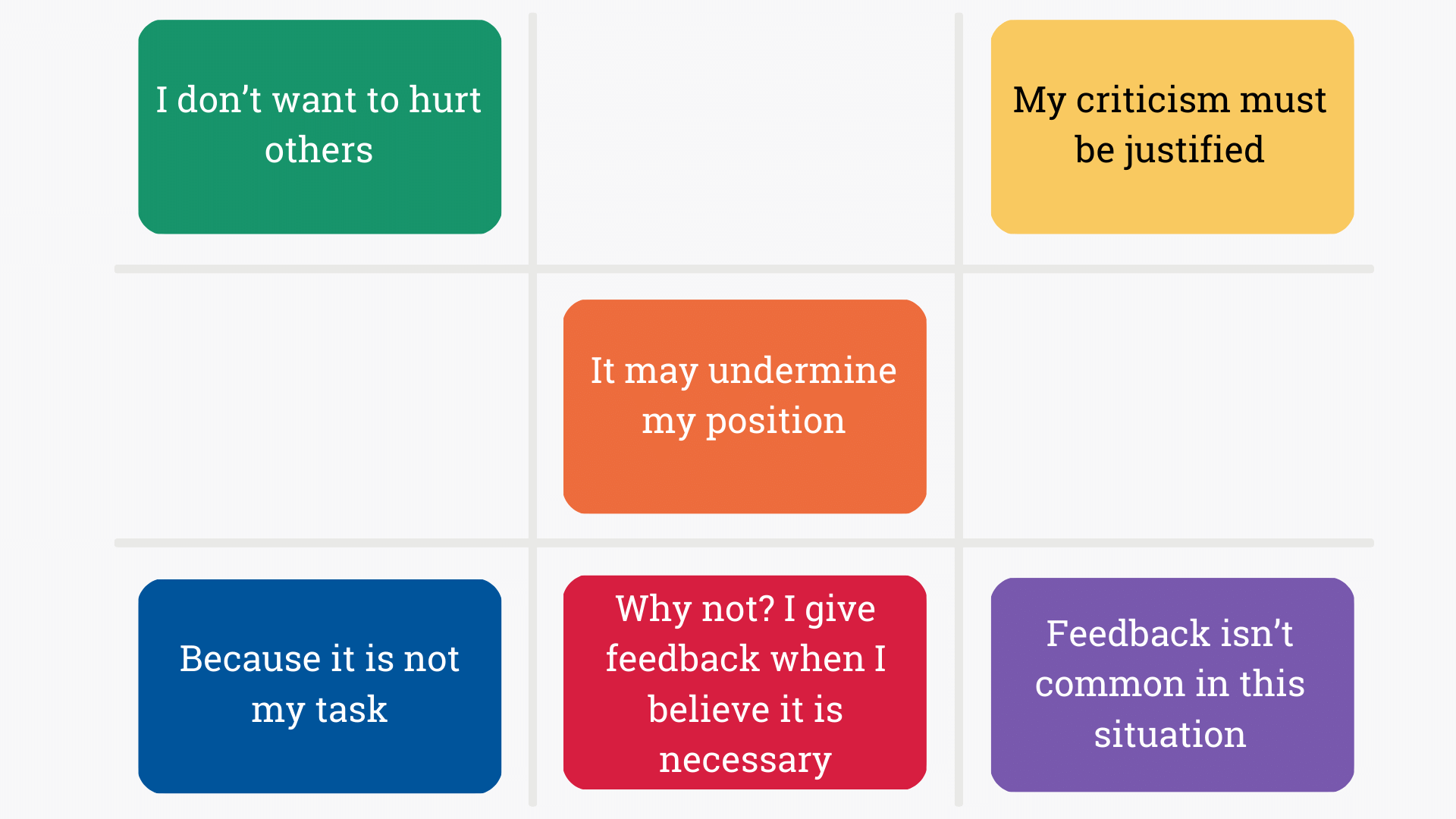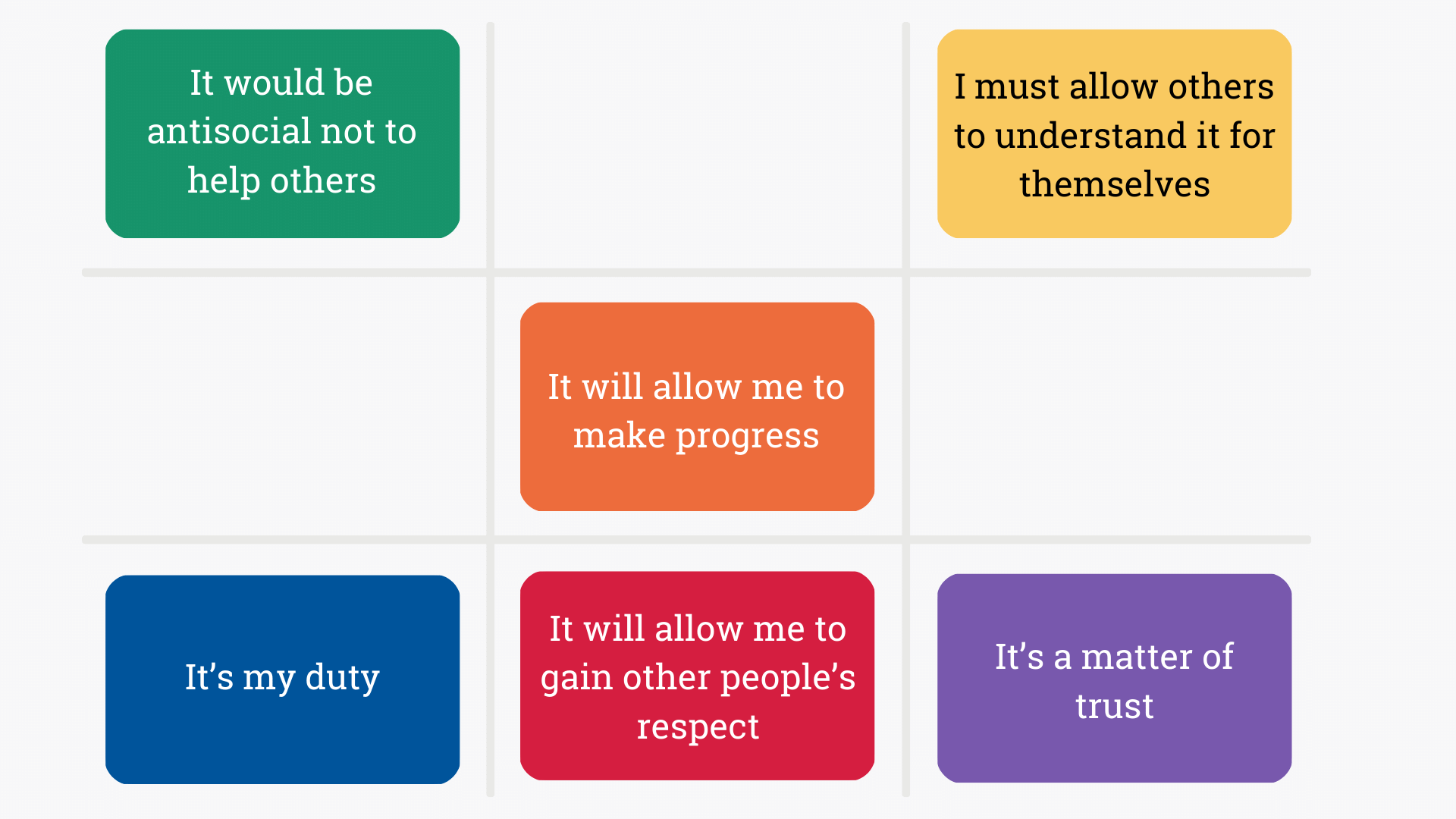Creating an open feedback culture
In the workplace, we all deal with the topic of feedback, such as receiving tips or comments from colleagues, annual evaluations, progress talks, and team meetings where feedback is discussed. Feedback is a communication to someone that provides information on how his/her behaviour is perceived and experienced by another. Giving and receiving feedback is very valuable, provided it is given in a positive way and openly received. It is proven that constructive feedback is transformative and enhances employee performance. It supports people in achieving their goals. Research by Gartner shows that 81% believe that feedback is crucial for improving performance (Gartner, 2021).
Furthermore, an increase in giving and receiving feedback in the workplace leads to 63% more engagement, 79% more job satisfaction, and people who receive more feedback are also 1.2 times more likely to stay with the organization, compared to those who receive little feedback. Feedback also contributes to improved decision-making and collaboration, as well as increased productivity and performance. Not only the individual benefits from this, but the entire company benefits as well (Christine Porath, Mastering Community).
The benefits and power of giving and receiving constructive feedback are clearly demonstrated. However, some people find it difficult to give and receive feedback and sometimes do not do so. There are several reasons for people not to give feedback. From the perspective of drives, these could be the following beliefs:
I do not give feedback because:

For both individuals, teams and organizations to benefit from the advantages of feedback, it is important that feedback is embraced by employees and that they experience its benefits. It helps if you can see feedback as an opportunity to grow, and not as an attack on yourself or the other person.
From the perspective of drives, the following are motivations to give feedback:
I do give feedback because…

Tips for creating an open feedback culture:
- View feedback from the motivation to give it and together create a culture in which giving and receiving feedback is encouraged and thus normalized.
- Use the 360-degree feedback module of MD to get a complete picture of your behaviour and functioning and how others view it. With this method, you ask for feedback from multiple people in your immediate environment (colleagues, friends, family).
- Schedule fixed and regular moments to give and receive feedback.
- Give specific feedback with concrete examples.
- Give feedback based on an objective observation.
- Keep it close to yourself.
Want to learn more about giving and receiving constructive feedback? Management Drives offers a specific tool and feedback training that uses a feedback mirror to provide clear insights into behaviour. The feedback tool shows how people see themselves, how others see them, and how their behaviour is reflected in everyday practice.
By gaining in-depth insights into your own behaviour and receiving targeted feedback from multiple perspectives, you can measure, practice, and continue to display behaviour that you want to develop. During the training, you get guidance on behaviour that people can maintain, develop, or let go of.
During the training, you present your own feedback and experience for yourself what the tool can mean for you.
More information about the training here!